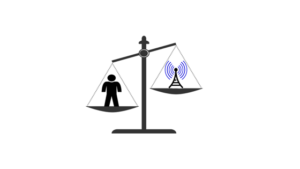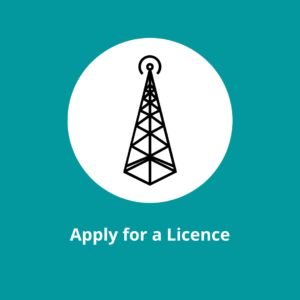
We all enjoy telecommunications services. Our kids spend too much time online looking at videos that are not school related. And what would we do without Facebook, Whatsapp, Twitter and the like. All of these services are powered through Telecommunications.
Do you remember the time when we had to pay EC5.00 per minute to make a voice call to the USA. How much do we pay now? Do we pay anything at all besides our internet bill? Facebook and Whatsapp calling has virtually revolutionized the way we stay in contact with our friends and family overseas. We are virtually always in contact now-a-days.
This article will give a little behind the scenes of how we moved from a Cable and Wireless run monopoly where we paid EC$5.00 to call the USA to a time where we can call virtually for free.
Background
Prior to 2001 St. Vincent and the Grenadines had a telecommunications monopoly with Cable and Wireless providing the only telecommunications or telephone service in the country.
From 2001 everything changed. The Government pass the Telecommunications Act No 1 of 2001 which created the National Telecommunications Regulatory Commission (NTRC); our Telecommunications Regulator.
What is the purpose of the regulator?
In 2001 Cable and Wireless was the only provider of telecommunications services in the country. If it were left up to only the good nature of the company to let competitors in to compete with them and take away their revenue then we will still have a monopoly situation in the country.
The regulator was created to enable a more balanced telecommunications sector with lower prices. Such a sector encourages the uptake of more telecommunications services.
More practically it is the job of the regulator to review applications from companies who want to provide telecommunications in the country. If on review of the application we believe that the issuance of the licence will be a benefit to the country then a recommendation is made to the Minister of Telecommunications for its issuance.
In our review of these applications it is imperative that we keep in mind that the consumer comes first. The role of the regulator is to help create a telecommunications sector where a multiple player market helps to lower the prices of telecommunications.
However in the absence of this then it is the role of the regulator to help as much as possible to simulate a multiple player market which will also help decrease market prices.
Telecommunications Regulation in St. Vincent & the Grenadines
Along with the recommendation for issuance of telecommunications licences, the NTRC in St. Vincent and the Grenadines plays other roles:
- Ensure that telecom operators treat each other fairly. An example of this is one operator charging another operator high prices for the connection of their networks
- We ensure that the telecom operators treat the consumers fairly.
- We collect monies called Universal Service Fund monies from the operators so that we can provide additional telecommunications services to our public. Thus far the projects implemented by the NTRC are:
- Schools Project
- Police and Health Center Project
- Community Centre project
- SMART Project
- Internet Project
- Payphone Project
- Maritime Project
One can say that the role of the NTRC is to enable the provision of telecommunications services to the people of St. Vincent and the Grenadines at prices that encourage persons to take advantage of such services.
Because the NTRC is an enabler of telecommunications services and not a provider of services our regulations provide for us to ensure that all disputes between providers of services or between providers and consumers are dealt with in a timely manner.
Another way of looking at the role of the regulator is as follows:
- We are the gate-keepers for telecommunications operators like Digicel for entrance into our market.
- Once inside we ensure that all operators play fair with each other
- Also while on the playing field we ensure that the operators treat also treat the consumers fairly.
Spectrum Management
Spectrum management is another role of the telecommunications regulator in St. Vincent and the Grenadines.
This however is another purpose of telecommunications regulation that most people do not understand.
So for many persons the question may be what is Spectrum and how do you manage it?
Spectrum refers to the Electromagnetic (EM) Spectrum which contains radio waves, light waves, sound waves and microwaves, etc. Within the NTRC we typically manage the radio waves and microwaves because these are two classifications of the EM spectrum that are used to provide wireless telecommunications services.
When we use our mobile phones to make phone calls we are using radio waves to make a connection to the nearest cell sites and many times microwaves to connect between cell sites. Take for example you are in Georgetown and want to call your friend currently in Kingstown. Radio waves will travel from your cellular phone to the nearest cell tower. From there your call can travel across cell towers using microwaves until it reaches the nearest cell tower to your friend. From then it is handed back over to radio waves which travel to your friends’ cell phone and the phone rings.
The role of the NTRC in managing these radio and microwaves is to ensure that no two operators have the same frequencies. Assigning the same frequencies to different operators can result in interference between providers which may result in dropped calls.
It must be noted here that weather can affect the frequencies used in a cellular network as rain sometimes can cause the phone signals to not reach as far as they would in normal conditions.
As such if you are suffering from lots of dropped calls on a particularly rain day then it may be due to weather conditions.
From 2001 to Present
Now that you have had a bit of behind the scenes of what the regulator does, the question remains to be answered regarding what has happened over the past 15 or so years that enables us to go from paying EC$5.00 per minute for calls to the USA to virtually free calling.
The answer to that is two-fold: (1) competition in our telecommunications market in the form of Digicel and (2) Technological changes.
Having competitor(s) in the market causes the providers to compete with regarding to product and service pricing. If one prices too high then they may lose customers to the other. Typically the more competitors in the market the better the prices to the consumer.
Also technological advances over the past years have enabled us to have voice calling over data networks. Communication over data networks is cheaper than that over the typical PSTN (public switched telecommunications network) and as such results in cheaper calling.
Going Forward
The goals of the NTRC remains the same. The Commission is here to ensure Digicel and Cable & Wireless play fair. We remain the organization that helps to enable more affordable telecommunications while not only ensuring that the providers play fair, but also that the customers are treated fairly. To do this we manage any disputes between providers or consumers while also utilizing (USF) funds to provide telecommunications services to all.
If technology articles such as these are of interest to you, please enter your email address below. Your subscription is free and gives you access to our monthly newsletter, telecommunications or technology articles published as well as telecommunications promotions that are run from time to time.
We all enjoy telecommunications services. Our kids spend too much time online looking at videos that are not school related. And what would we do without Facebook, Whatsapp, Twitter and the like. All of these services are powered through Telecommunications.
Do you remember the time when we had to pay EC5.00 per minute to make a voice call to the USA. How much do we pay now? Do we pay anything at all besides our internet bill? Facebook and Whatsapp calling has virtually revolutionized the way we stay in contact with our friends and family overseas. We are virtually always in contact now-a-days.
This article will give a little behind the scenes of how we moved from a Cable and Wireless run monopoly where we paid EC$5.00 to call the USA to a time where we can call virtually for free.
Background
Prior to 2001 St. Vincent and the Grenadines had a telecommunications monopoly with Cable and Wireless providing the only telecommunications or telephone service in the country.
From 2001 everything changed. The Government pass the Telecommunications Act No 1 of 2001 which created the National Telecommunications Regulatory Commission (NTRC); our Telecommunications Regulator.
What is the purpose of the regulator?
In 2001 Cable and Wireless was the only provider of telecommunications services in the country. If it were left up to only the good nature of the company to let competitors in to compete with them and take away their revenue then we will still have a monopoly situation in the country.
The regulator was created to enable a more balanced telecommunications sector with lower prices. Such a sector encourages the uptake of more telecommunications services.
More practically it is the job of the regulator to review applications from companies who want to provide telecommunications in the country. If on review of the application we believe that the issuance of the licence will be a benefit to the country then a recommendation is made to the Minister of Telecommunications for its issuance.
In our review of these applications it is imperative that we keep in mind that the consumer comes first. The role of the regulator is to help create a telecommunications sector where a multiple player market helps to lower the prices of telecommunications.
However in the absence of this then it is the role of the regulator to help as much as possible to simulate a multiple player market which will also help decrease market prices.
Telecommunications Regulation in St. Vincent & the Grenadines
Along with the recommendation for issuance of telecommunications licences, the NTRC in St. Vincent and the Grenadines plays other roles:
- Ensure that telecom operators treat each other fairly. An example of this is one operator charging another operator high prices for the connection of their networks
- We ensure that the telecom operators treat the consumers fairly.
- We collect monies called Universal Service Fund monies from the operators so that we can provide additional telecommunications services to our public. Thus far the projects implemented by the NTRC are:
- Schools Project
- Police and Health Center Project
- Community Centre project
- SMART Project
- Internet Project
- Payphone Project
- Maritime Project
One can say that the role of the NTRC is to enable the provision of telecommunications services to the people of St. Vincent and the Grenadines at prices that encourage persons to take advantage of such services.
Because the NTRC is an enabler of telecommunications services and not a provider of services our regulations provide for us to ensure that all disputes between providers of services or between providers and consumers are dealt with in a timely manner.
Another way of looking at the role of the regulator is as follows:
- We are the gate-keepers for telecommunications operators like Digicel for entrance into our market.
- Once inside we ensure that all operators play fair with each other
- Also while on the playing field we ensure that the operators treat also treat the consumers fairly.
Spectrum Management
Spectrum management is another role of the telecommunications regulator in St. Vincent and the Grenadines.
This however is another purpose of telecommunications regulation that most people do not understand.
So for many persons the question may be what is Spectrum and how do you manage it?
Spectrum refers to the Electromagnetic (EM) Spectrum which contains radio waves, light waves, sound waves and microwaves, etc. Within the NTRC we typically manage the radio waves and microwaves because these are two classifications of the EM spectrum that are used to provide wireless telecommunications services.
When we use our mobile phones to make phone calls we are using radio waves to make a connection to the nearest cell sites and many times microwaves to connect between cell sites. Take for example you are in Georgetown and want to call your friend currently in Kingstown. Radio waves will travel from your cellular phone to the nearest cell tower. From there your call can travel across cell towers using microwaves until it reaches the nearest cell tower to your friend. From then it is handed back over to radio waves which travel to your friends’ cell phone and the phone rings.
The role of the NTRC in managing these radio and microwaves is to ensure that no two operators have the same frequencies. Assigning the same frequencies to different operators can result in interference between providers which may result in dropped calls.
It must be noted here that weather can affect the frequencies used in a cellular network as rain sometimes can cause the phone signals to not reach as far as they would in normal conditions.
As such if you are suffering from lots of dropped calls on a particularly rain day then it may be due to weather conditions.
From 2001 to Present
Now that you have had a bit of behind the scenes of what the regulator does, the question remains to be answered regarding what has happened over the past 15 or so years that enables us to go from paying EC$5.00 per minute for calls to the USA to virtually free calling.
The answer to that is two-fold: (1) competition in our telecommunications market in the form of Digicel and (2) Technological changes.
Having competitor(s) in the market causes the providers to compete with regarding to product and service pricing. If one prices too high then they may lose customers to the other. Typically the more competitors in the market the better the prices to the consumer.
Also technological advances over the past years have enabled us to have voice calling over data networks. Communication over data networks is cheaper than that over the typical PSTN (public switched telecommunications network) and as such results in cheaper calling.
Going Forward
The goals of the NTRC remains the same. The Commission is here to ensure Digicel and Cable & Wireless play fair. We remain the organization that helps to enable more affordable telecommunications while not only ensuring that the providers play fair, but also that the customers are treated fairly. To do this we manage any disputes between providers or consumers while also utilizing (USF) funds to provide telecommunications services to all.
If technology articles such as these are of interest to you, please enter your email address below. Your subscription is free and gives you access to our monthly newsletter, telecommunications or technology articles published as well as telecommunications promotions that are run from time to time.



